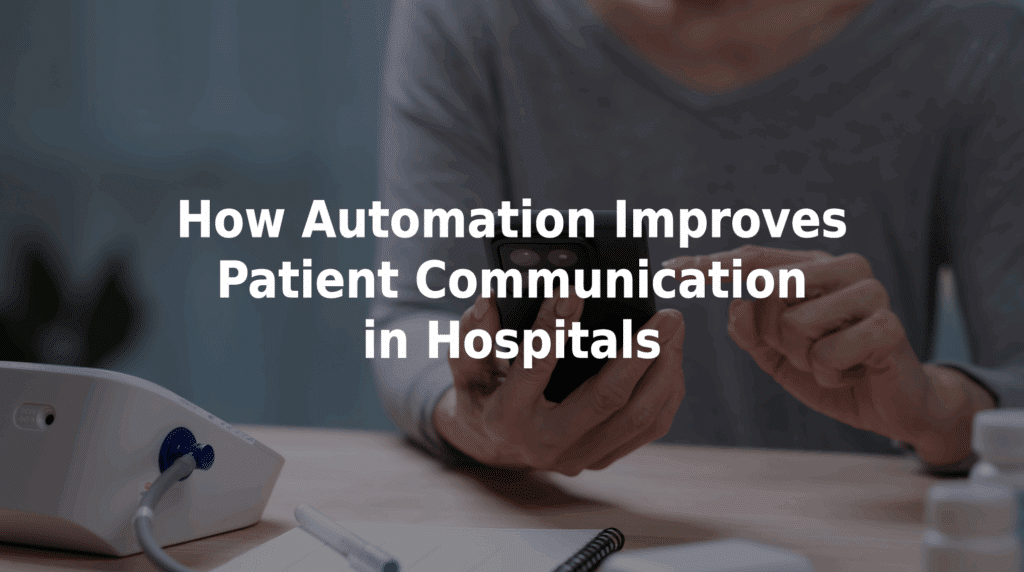How Automation Improves Patient Communication in Hospitals
Effective patient communication is essential to quality care — yet hospitals continue to struggle with fragmented, delayed, or inconsistent messaging. For clinical operations managers, exploring how automation improves patient communication in hospitals isn’t just about convenience; it’s about safety, efficiency, and patient satisfaction. The right tools can transform intake processes, reduce staff burden, and ensure that patients are heard — and helped — faster.
Why Patient Communication Is a Critical Operations Focus
Whether it’s a medication request, a symptom report, or a follow-up question, every patient interaction must be handled with accuracy and urgency. However, traditional communication methods often create barriers like:
- Long wait times over the phones.
- Missed or incomplete messages filed.
- Staff members who are overwhelmed by repetitive, low-priority calls.
- Delays in care escalation due to a lack of structure or clarity.
How Automation Enhances Patient Communication
1. Streamlined Symptom Intake and Patient Requests
Depending on the tool, automation can help patients with structured forms or chat prompts so that they provide the right information the first time they contact their providers — without relying on staff interpretation.
2. Reduced Call Volume and Staff Interruptions
Automation handles routine messages (e.g., prescription refills, nonurgent symptoms), freeing up staff for complex cases and cutting down on call center fatigue.
3. Improved Response Time With Smart Routing
Patient inputs are automatically categorized and escalated when needed, getting the right information to the right members of a clinical team faster.
4. Consistent Patient Experiences
With structured workflows, patients receive the same quality of communication regardless of when or how they reach out — enhancing trust and satisfaction.
5. Closed Communication Gaps Across Departments
Automated systems centralize intake data and integrate it with existing workflows, reducing the chance of information being lost or misrouted.
A Case for Automation
A pediatrics hospital began using TriageLogic’s MedMessage Automate solution to handle patient requests. This led to:
- 60% of calls being diverted to self-service.
- A 90% satisfaction rate from patients using automated intake.
- 3-7 minutes of saved human capital per interaction with the tool.
These results demonstrate how automation doesn’t simply improve communication, but it also helps hospital staff substantially improve operations and care quality.
Key Considerations for Implementation
- Choose tools that integrate with your EHR.
- Ensure patient-facing technology is mobile-friendly and HIPAA-compliant.
- Train staff to monitor and act on automated escalations.
- Start with high-volume, low-complexity requests to maximize impact quickly.
TriageLogic’s MedMessage Automate is a solution that allows hospitals to collect patient symptoms and concerns using a secure chatbot. It uses structured prompts to capture complete, clinically relevant messages that are routed to the appropriate team members for follow-up.
Benefits include:
- Reduced manual intake.
- Faster clinical response times.
- Standardized documentation across departments.
- Improved communication without hiring additional staff.
By automating the most frequent patient interactions, MedMessage Automate ensures that your hospital maintains high care standards even during surges in call volume or staff limitations.
Ready to Modernize Patient Communication?
Discover how MedMessage Automate can help you streamline intake, reduce risk, and deliver a better patient experience. Contact us today to schedule a demo!

